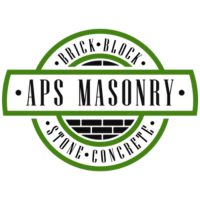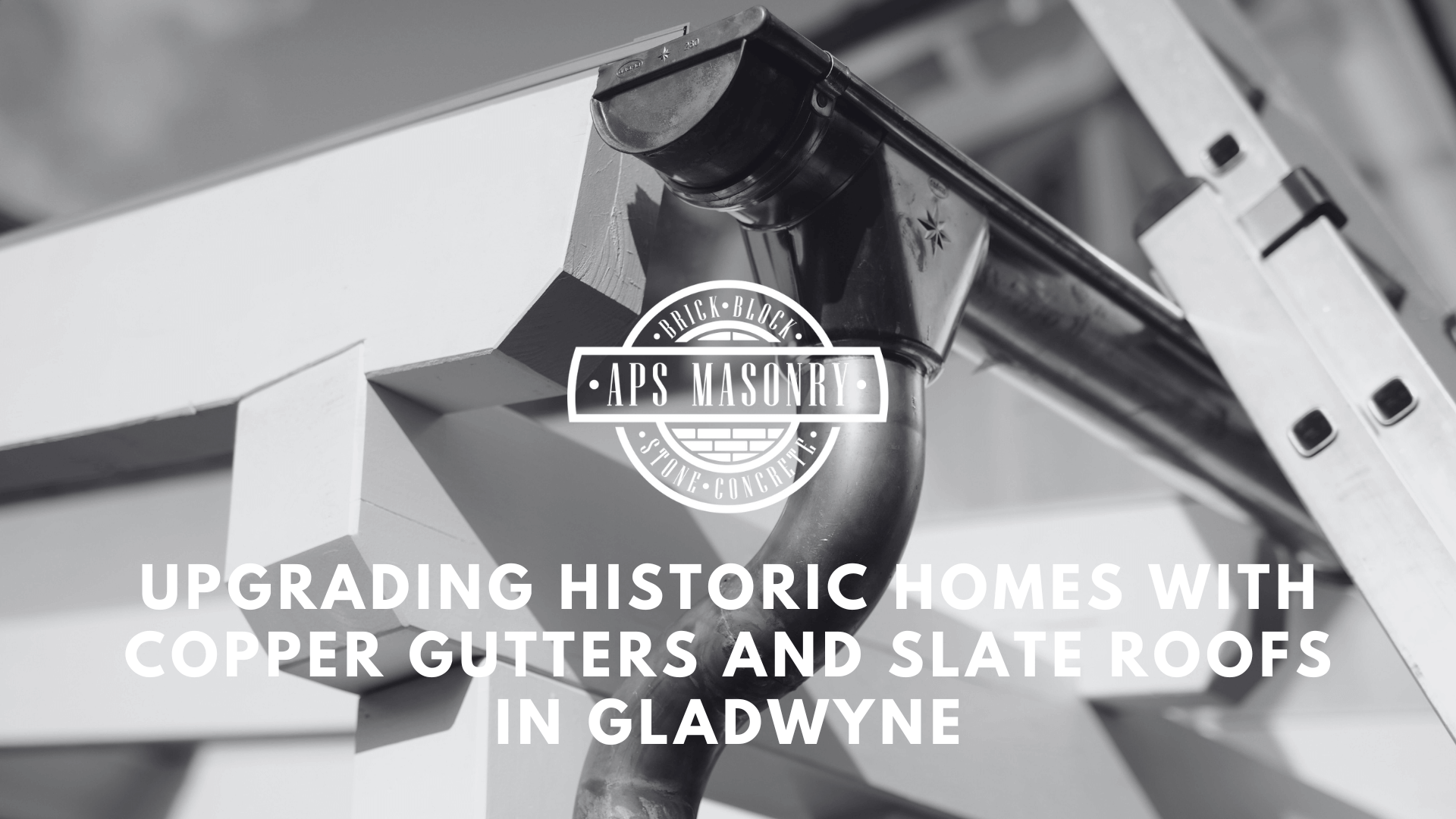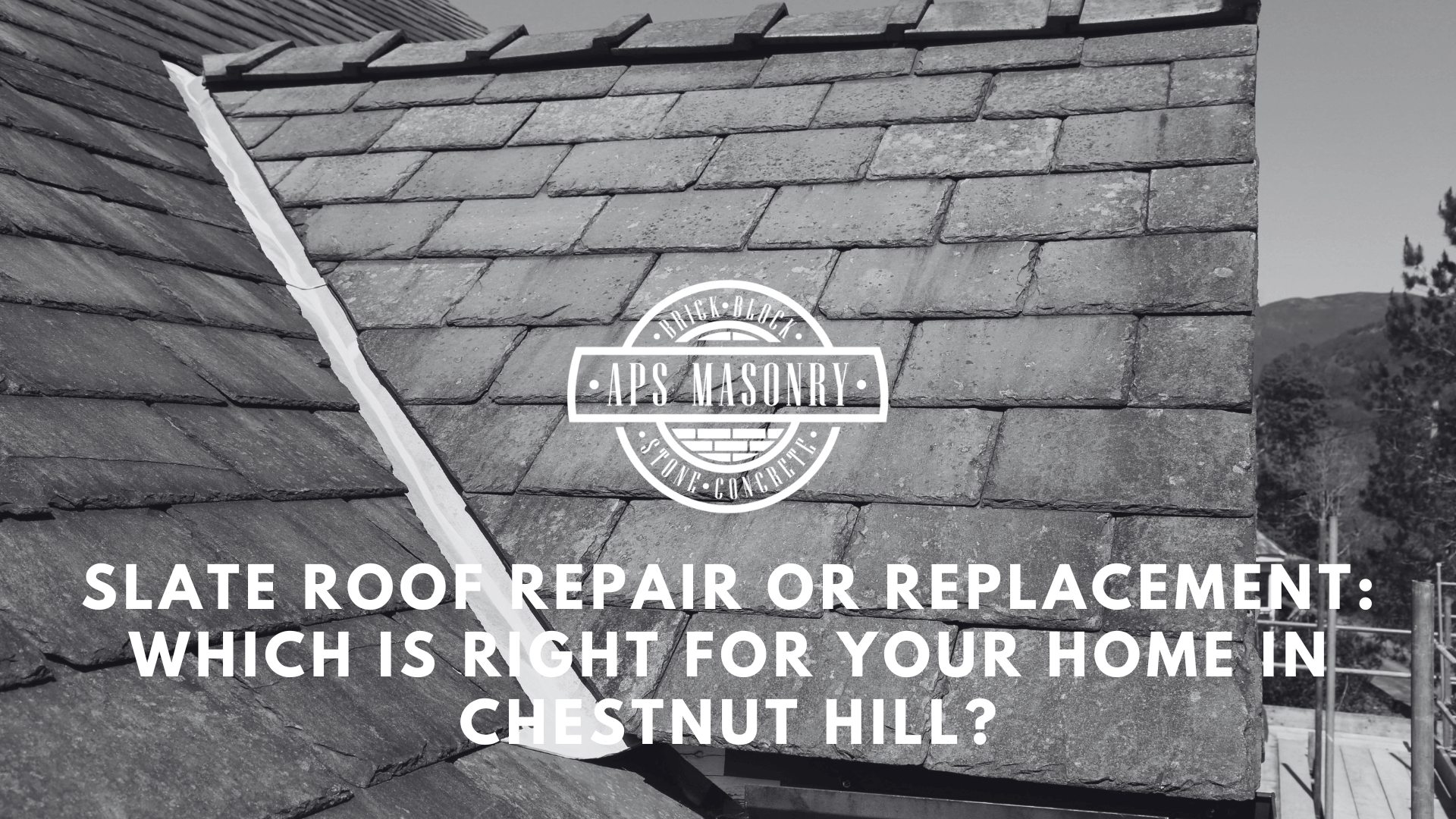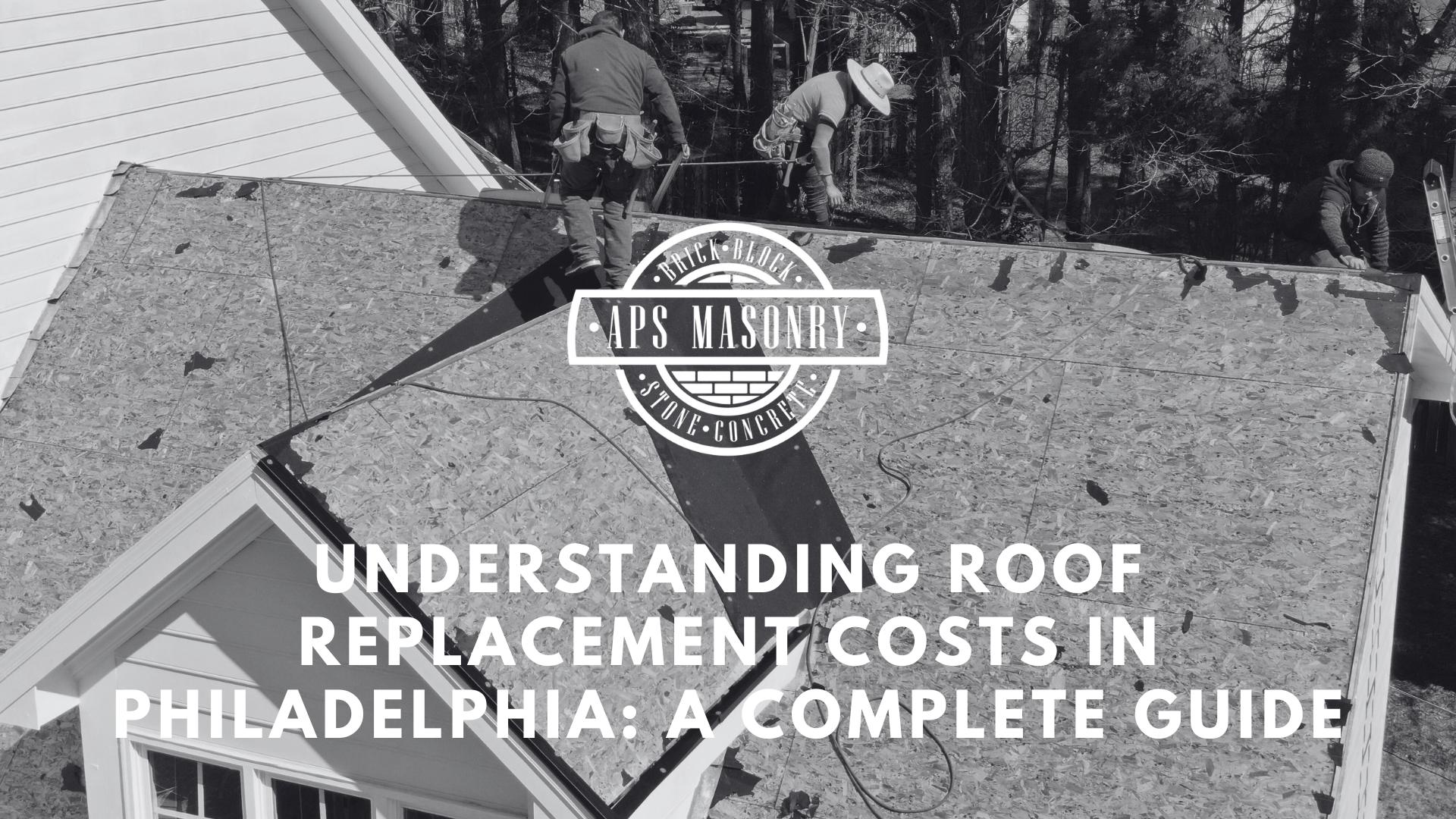How to Maintain and Protect Your Copper Gutters on the Main Line
Copper gutters reflect the architectural care and attention Main Line homes are known for. Maintenance keeps them working and keeps your property...
8 min read
 Alec Serowatka
:
Aug 28, 2025 9:59:26 AM
Alec Serowatka
:
Aug 28, 2025 9:59:26 AM

Water doesn’t care how historic the house is; it finds a way in.
Slate roofing doesn’t hide the sag in a structural joint. Copper gutters don’t fix the pitch of a rotten sill. When upgrades begin without correction, the damage gets covered, not removed. Most roof replacements across the Main Line fail where flashing meets stone. Most gutters detach because the fascia beneath has already started to go soft. Quality materials cost more when they get installed twice. Project cost rises when exterior services skip the inspection that shows what’s moving behind the siding.
Homeowners in Gladwyne and Bryn Mawr live with materials that carry weight: Slate, brick. stone. Every copper downspout empties next to a foundation that cracks if water finds a path. Heat loss builds where rooflines shift above windows and doors. Tile breaks near anchors. Shingles lift near chimneys. Gutters collapse after freeze cycles. Water moves through every seam until it finds framing. Long lasting results come from structural work, not the finish. Most properties don’t get that support. Most upgrades protect the surface and leave the rest.
We specialize in renovations that preserve original materials while solving today’s structural demands. Book a free consultation to assess what your historic home needs beneath the surface.
This plan applies to homeowners in Gladwyne and across the Main Line who are already committed to upgrading their historic property with copper gutters and slate roofing. You’ve made the decision. Now you need to understand exactly what this upgrade involves, what gets corrected along the way, and what ensures your investment delivers performance, durability, and value for decades—not just curb appeal for a few seasons.
Slate roofing weighs significantly more than asphalt. Copper gutters pull more consistently under load than aluminum. Historic properties in Gladwyne were not framed to modern spec, and this upgrade adds tension to an already aging structure.
What happens during this phase:
Reinforce rafters to support slate weight without mid-span deflection
Rebuild soffits and fascia with proper anchoring depth for copper brackets
Assess ridge line for sag and apply corrective carpentry if needed
Prep all eaves and overhangs for full-load bearing, especially near dormers
Ensure all structural changes are tied back into original framing
This is not optional. Without this work, your roof replacement will fail in stages—first at the brackets, then at the flashing, then at the ridge.
Historic homes have unpredictable construction under the surface. Before installation begins, all previous layers—flashing, gutters, shingle systems, synthetic underlayments—must be fully removed.
What’s included:
Removal of all old roofing materials, nails, and incompatible membranes
Strip fascia and soffit surfaces to expose framing
Protect landscaping, pathways, and original exterior detailing with coverage systems
Set up fall protection and work access that minimizes contact with fragile siding or stucco
Isolate chimney zones, parapet caps, and transition walls for separate treatment
This ensures the installation begins with clear, stable material connections—not patch jobs or buried defects.
This phase uses premium materials, but premium results require proper sequencing, fastening, and spacing. No slate roof functions without proper underlayment, copper flashing, and ventilation flow.
Precision installation includes:
Install wood sheathing or board decking as needed to replace unstable substrate
Place vapor-permeable underlayment across full field
Set copper flashing into masonry joints at valleys, ridges, dormers, and chimneys
Hand-lay slate with proper headlap and staggered coursing
Cap all penetrations with copper, not aluminum or caulk-based products
Install ridge vents or slate ridge caps depending on ventilation plan
Proper installation preserves tile integrity, prevents cracking from thermal movement, and ensures drainage patterns don’t overload lower courses.
Copper offers durability, but its performance depends on slope, bracket spacing, and discharge strategy. Gutter install is not just edge trim—it’s the drainage system for the entire structure.
Install sequence:
Use copper brackets every 18 to 24 inches, tied directly into reinforced fascia
Align gutter pitch to avoid standing water or corner pooling
Solder joints for continuous flow—no sealant joints
Install oversized copper downspouts where roof area demands higher flow
Extend downspouts away from the foundation, not just to grade
Tie discharge into French drains or dry wells if surface slope allows
Poorly installed copper looks good on day one, then causes replacement-level damage at year five. Done correctly, it lasts a lifetime.
With roofing and drainage complete, detailing protects the surrounding features—siding, masonry, and trim.
Included services:
Reflash and reseal chimney base into slate and masonry
Paint or seal soffits and rafter tails with breathable, moisture-resistant coating
Patch or repoint parapet walls and step-flashing zones
Adjust flashing overlaps to avoid backflow at siding interfaces
Inspect all seams for thermal expansion room and fastening security
This work ensures the roof and gutter upgrade protects the entire exterior envelope—not just the surface above it.
Some companies show up with a catalog and a calculator. Others come in swinging
A completed upgrade does not mean the house is finished. It means it’s performing. The final phase sets the standard for what customer satisfaction actually looks like in historic exterior renovation.
Final handoff includes:
Full site cleanup and disposal of legacy materials
Final inspection with documentation of completed work
Walkthrough of slate repair strategy for future tile damage
Explanation of seasonal copper patina behavior
Written plan for seasonal maintenance and drainage inspection
Confirmation that all structural changes align with visible finish
This is where long-term durability is confirmed. What holds today must hold through storms, snow, and freeze cycles for decades. A good-looking upgrade isn’t enough. A stable, protected, and structurally aligned upgrade is the goal.
This is how an actual upgrade happens—on the ground, under the tile, and behind the copper. This is what the project cost actually pays for. Not just a new roof, not just new gutters, but a house that stops reacting to age and starts performing through it.
Get a professional opinion before small issues become full rebuilds. Request a free consultation with APS Masonry and see what needs to hold before you invest in the finish.
A slate tile replaced today costs less than the wall it soaks tomorrow. A copper gutter properly installed protects more than the fascia—it keeps water from entering the foundation, freezing in place, and cracking the structural base of the house. What starts as a missed repair becomes a full renovation when the damage spreads beyond the surface.
Delaying slate roofing or copper gutter installation means facing work during an emergency, not on your schedule. When water enters behind siding, soaks through the top course of brick, and reaches interior walls, you're no longer scheduling installation. You're coordinating demolition, remediation, drying, framing, and reconstruction—often across weeks, not days.
Even small failures cost time:
Rebuilding soaked soffits adds 1 to 2 days to a basic gutter job
Replacing rotten roof decking can add a full week
Interior plaster and paint repairs from water damage extend the job by 10+ days
Permit delays for structural work increase timelines on older homes, especially in historic zones like Gladwyne
Historic homes don’t have quick fixes. If damage spreads behind walls or beneath rooflines, repairs touch everything. Plaster, trim, flooring, cabinetry, electrical. The more time that passes, the more rooms are affected—and the less control you have over how invasive the work becomes.
Partial teardown of walls to dry and access hidden damage
Temporary roof patches that don't match existing material
Dust, vibration, and open structure during multi-phase interior rebuilds
Noise and access disruptions over weeks rather than days
Cold or damp interior conditions during prolonged repair timelines
Lost use of bedrooms, bathrooms, or entire wings during structural reconstruction
The further the failure spreads, the more the home stops functioning around the people who live in it.
Project cost increases exponentially when exterior work becomes interior restoration. Installing copper gutters and slate roofing during a planned upgrade keeps spending focused. Delaying it until damage becomes visible multiplies cost across trades.
Mold remediation and moisture testing
Custom millwork replication for damaged interior finishes
Structural rebuilds of parapet walls, roof decks, and chimney shoulders
Emergency winter repairs billed at accelerated rates
Insurance claim battles when preventive maintenance was deferred
Increased energy costs from prolonged heat loss and roof inefficiency
An upgrade spreads cost across planned phases. A renovation absorbs it all at once. The difference is felt in savings, stability, and the ability to protect everything the exterior is supposed to hold back.
Stone holds weight without warning. When it gives, it gives all at once. Water trapped behind siding pushes through the mortar, saturates the wall cavity, and forces movement from the inside out. These houses don’t break where it shows, they break where it’s quiet. Around the chimney. Under the window sill. Behind the door frame that swells every spring.
Upgrading these properties demands more than materials. It demands context. A slate roof means nothing if the dormer pitch stays uneven. Copper gutters collapse when the base wall shifts. Each detail finished without correction fails again within the year. Customer satisfaction doesn't come from speed. It comes from stability. A completed upgrade protects structure, not just appearance. A professional result holds alignment through freeze cycles, storm runoff, and thermal pressure. That’s how old properties gain life, not from change, but from resistance.
Gladwyne homes don’t age like suburban builds. They absorb pressure like the landscape itself. Elevation, shade and slope all push the structure in different directions. Homes built with local stone respond to those forces over time. They don’t bounce back on their own. It takes a team that understands those forces to enhance a structure without replacing its identity. That’s the work. That’s the upgrade.
Schedule a free consultation with APS Masonry to review your project scope, timelines, and structural needs before the first hammer hits.
Copper gutters hold their shape across every freeze cycle Gladwyne sees between November and March. When installed properly, they manage runoff from slate roofing, preserve mortar at the roofline, and prevent saturation behind siding. Most homes along the Main Line, especially older properties with original fascia or patched repairs, already show movement near the gutter line. Water pushes under shingles. Flashing pulls. Brickwork softens at the corner. Without correction, a gutter install just hides the problem for another year.
In Philadelphia’s historic neighborhoods, where slate tiles still cover gables and dormers, runoff doesn’t slow. It collects where the slope ends. If copper downspouts aren’t positioned away from masonry or grading hasn’t been updated, the foundation takes the full load. Replacing gutters without reinforcing the base invites the same failure in a different form. The job looks clean. The water stays hidden. The damage continues.
Install means the full system works with the structure. Pitch, bracket, discharge, placement. It means accounting for weight across materials, not just aesthetics. Most gutter replacements in Gladwyne get completed with no structural prep. Progress stops at the drip edge. Customer satisfaction drops after the first winter storm. The wrong job costs more than the right upgrade, and in most cases, the repair takes longer than the install itself.
Slate repairs begin at the break but rarely end there. Once a tile cracks, water follows gravity and soaks the layer below. That’s where the structure takes damage. Masonry joints beneath the roofline absorb runoff that never should have reached them. In Gladwyne and throughout southeastern Pennsylvania, these houses carry the weight of original stone, field-built chimneys, and early wood framing. When one element shifts, the rest compensates. Premium materials like slate protect the surface, but they rely on structural changes below to hold the line.
Most homes in this region were built without the reinforcement needed to handle decades of thermal cycling, storm impact, and settlement. Restoration means more than cleaning joints or patching leaks. It means carpentry where the roof framing no longer supports tile. It means anchoring mortar where flashing meets stone. It means painting soffits to reflect heat and slow deterioration. These renovations demand alignment between materials and structure or the roof fails again within seasons.
Budget decisions at the surface affect repairs below. A project that skips installation of flashing at parapet walls or valleys invites mold, rot, and structural damage. Replacing slate without addressing what's beneath costs more in money, time, and loss of materials. PA weather doesn’t pause for surface repairs. Durable results depend on matching the roofing material to the state of the home underneath. That connection defines whether the work lasts.
Residential upgrades in Pennsylvania must deal with slope, shade, and saturation. A company that treats slate roofing like shingles misses the reality of these properties. Businesses that rush installation without structural assessment create more damage than they fix. True protection comes from masonry tied directly into the performance of the roof above it.
Copper gutters and slate roofing only perform when they’re supported by a structure that holds. That’s where APS Masonry Construction comes in. We don’t install roofing—we make sure the house is ready for it.
Our work ties everything together: reinforced framing beneath the eaves, stable masonry around chimney stacks, properly graded runoff that protects the foundation. If water is backing up near your fascia, if tile is cracking near the parapet, if gutters are failing and the siding below is taking the damage, we address what’s behind it. That’s the upgrade most contractors miss.
APS serves homeowners across Gladwyne, Lower Merion, Merion Station, and throughout the Main Line. We handle restoration and waterproofing in Rose Valley, Glen Mills, Drexel Hill, Garnet Valley, and other aging homes across Delaware County. We also take on projects in South Jersey, where climate conditions demand a different approach to drainage and material behavior.
Live in Philly or the surrounding area? Call now for a free consultation and site assessment.
We don’t build what people see. We build what makes it last. Every project starts with a full structural inspection and ends when the house holds under pressure. If your copper gutters or slate roofing need real support, APS is the contractor that handles what they rely on.

Copper gutters reflect the architectural care and attention Main Line homes are known for. Maintenance keeps them working and keeps your property...

Local knowledge matters. We know Chestnut Hill homes, and we connect you with trusted roofers when it’s time to protect your investment the right way.

Approximately 32.2% of properties in Philadelphia are at risk of flooding over the next 30 years, indicating large exposure to extreme weather events...